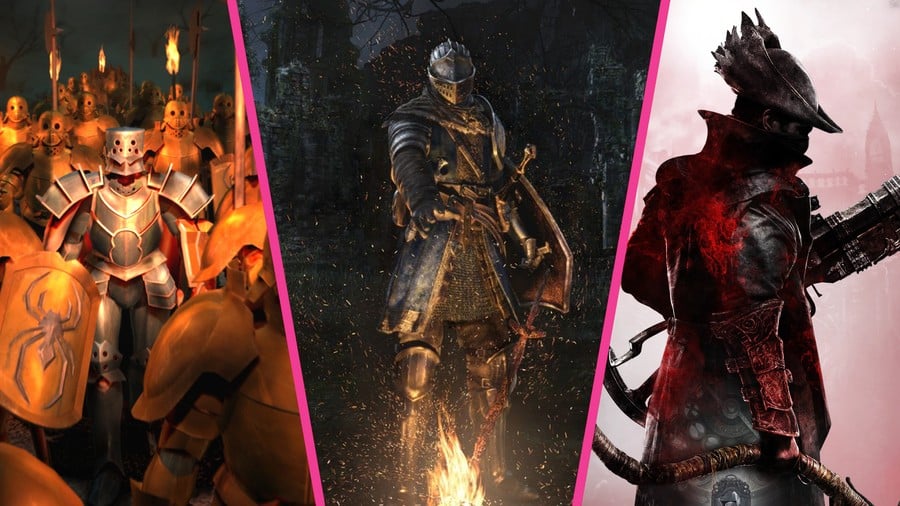
The FromSoftware journey, from its seed-of-an-idea King’s Field to the all-encompassing, watercooler universe of Elden Ring, is heavily symbolic of most players on the 'Soulsborne' voyage; small steps, many knockbacks, slow progress, little victories, helping hands, a warmer reception, bigger victories, then world-defining influence – within video games, at least.
Director and visionary extraordinaire Hidetaka Miyazaki set the series formulae, refining and experimenting, eventually arriving at his own genre – Soulsborne – a player-posited portmanteau that says nothing and everything. Now aped by other studios, there are plenty that have challenged the FromSoft M.O. over the years. Some have even come close to similar brilliance, but none has truly equalled the Japanese devco’s talent for such addictive adventure.
Naturally, it’s not without its missteps; the dense narrative, delivered piecemeal by infuriatingly cryptic NPCs (not to mention a ton of objects), opaque combat stats that do nothing (or else break your build), and side quest reveals you’d never work out if you lived to be a million. Then there’s having to repeat difficult sections over and over (and over), grinding for gear, or the jerky abomination that is Blight Town. Strangely, none of this is enough to dissuade the devoted.
Whatever magic FromSoftware is peddling, it’s keeping the studio at the top of the game. Memes aplenty, that infuriating ‘git gud’ mantra, plus some solid advertising, have all helped push the Souls series into mainstream game minds, a million miles from its humble beginnings.
And that’s the perfect place to start.
King’s Field Series (1994-06, PlayStation, PlayStation 2, PlayStation Portable, Windows, Mobile)
It’s fair to say the gulf between King’s Field and Elden Ring is gargantuan. Every aspect has been developed, overhauled and, in some cases, outright abandoned, not least due to the technological disparity but the change in videogame tastes and trends. Comparing the launch title’s mere five stages to the current offering’s expansive world is borderline pointless.
What does equate is FromSoftware’s blueprint, evident throughout the claustrophobic setting, the heavy-duty combat, and the sheer difficulty. Where new hardware let FromSoftware expand and develop core concepts, it’s that sense of oppressive mystery which knits its entire game canon together. Well, that and the Moonlight Sword, which any self-respecting fan will know features in every successive game (except Sekiro – no way to shoehorn it into that setting, unfortunately).
Dip into anything from King’s Field to King's Field IV, and you’ll struck by rough – and we mean really rough – textures, bog-awful controls, barren environments, and repetitive combat. But you’ll also encounter crafty level design, lone NPCs delivering story scraps, and illusory walls – albeit ones that don’t need hitting 50 times, thank goodness. It’s rudimentary by today’s standards, but the series, its PSP spin-offs, plus that build 'em-up for constructing your own King's Field games, was innovative stuff and the formative steps on the road to the genre-defining behemoth of today.
Demon’s Souls (2009-20, PlayStation 3, PlayStation 5)
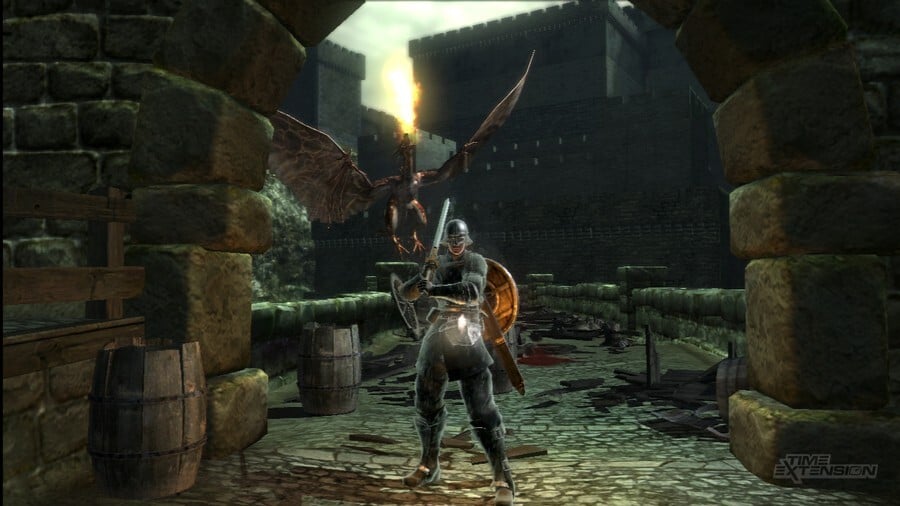
Whether you experienced the ‘trve kvlt’ original or the masterful rerelease, Demon’s Souls was light years ahead of anything that came before and a deserved sleeper classic, questionable grammar notwithstanding. The switch to third-person view, groovier graphics, and that essential FromSoft combat got baked in, while the staging saw a hub-like layout, with the Nexus acting as a centralised point from which to explore five areas. Semi-open path choices also saw their inception here, each area accessible after the first boss, but tempered by an invisible difficulty barrier covered with Miyazaki’s fingerprints. Beat the Phalanx at Boletaria Palace, then head to the Shrine of Storms to meet some friendly skeletons. See?
A spiritual successor to the King’s Field series, it was also here that Hidetaka Miyazaki stepped in as the game’s director, rescuing it from a lack of cohesion while setting in motion what is still recognisable as, de facto, the true Soulsborne identity. Everything you know about the series is here, including the genius online invasion/summon feature. No spoilers, but if you haven’t fought the Old Monk boss, you’re missing out.
Dark Souls (2011-18, PlayStation 3, PlayStation 4, Xbox 360, Xbox One, Nintendo Switch, Windows)
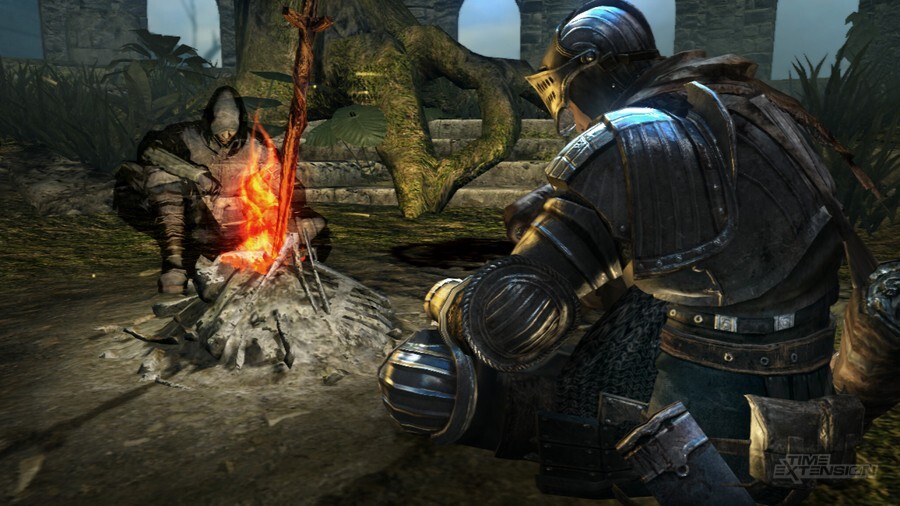
FromSoftware was still eschewing true sequels at this point, making Dark Souls a spiritual follow-up to its predecessor. It was immaterial; this was both the point of distillation and where the template branched out, both beyond the PlayStation family and to greater, worldwide numbers. 'Souls' had arrived; people started talking.
Gone was the spoke-and-hub world of Demon’s Souls, superseded wholly by an ingenious sprawl of thematic, bonfire-dotted environments that eventually folded back on themselves. Traversing The Depths, only to discover even deeper worlds, or experiencing the terror of New Londo Ruins’ ghosts were stand-out moments, yet shuffled off by even grander set-pieces like Anor Londo’s pant-soiling twin bosses, or the joyful realisation you could actually return to the Undead Asylum.
With bosses borne of sheer invention (Seath, we’re looking at you) a stack of Covenants to unravel, plus that epic, end-game DLC, it’s quite possible Dark Souls is one of the most important videogames ever, not-to-mention one of the most brilliant.
Dark Souls II (2014-15, PlayStation 3, PlayStation 4, Xbox 360, Xbox One, Windows)
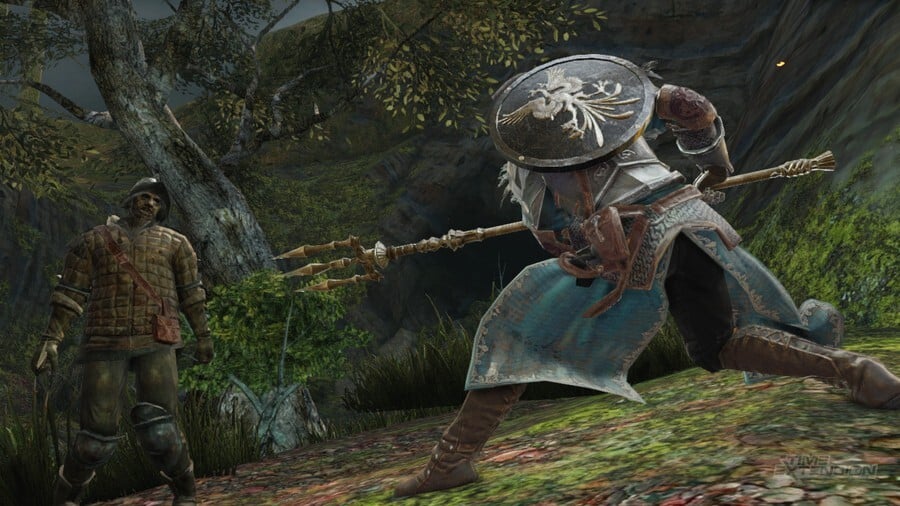
If you’re new to the series, you’re likely to get polarised responses should you bring up Dark Souls II. On the one hand, you’ll get moaned at about nonsensical bonfire placement, weapons that degrade way too quickly, and the unnecessarily messy healing system. Conversely, the DLC is stonkingly good, it had a dedicated PVP arena, while the Power Stancing mechanic was so good, FromSoft resurrected it for Elden Ring. The list for each goes on.
Fact is, by most standards, Dark Souls II remains a top-tier title, albeit one missing the deft hand of Miyazaki, who was then working on Bloodborne. It just doesn’t quite gel like its predecessor. But given that one’s God-like status, it was always going to be a tall order. So, banish the idea of ‘worst Souls game’. Think, instead, of the black sheep of the family, and one we’d still recommend. Who knows – you may come to love it…
Bloodborne (2015, PlayStation 4)
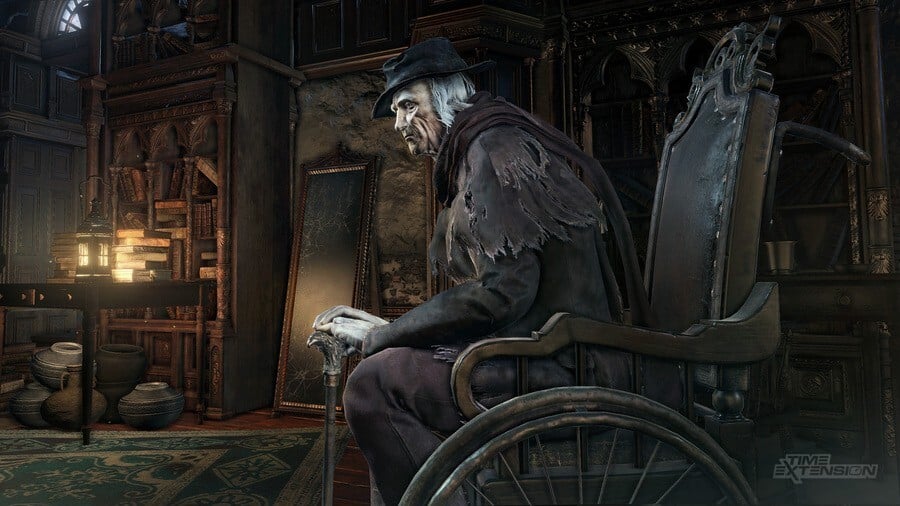
There are many gamers who consider Bloodborne FromSoft’s best game. And, despite being outside the Souls oeuvre, there’s merit in the conclusion.
The obvious thematic change was a masterful touch, Yarnham’s Victorian-inspired streets, twisting, turning, hiding dark secrets and darker creatures. A Gothic horror, it apes a Lovecraftian aesthetic, the Night of the Hunt a horrifying backdrop for the introduction of firearms in the Soulsborne universe. Gone was the slow, steady style of combat, replaced by a rapid strategy that rewarded aggression. Shields were superseded by guns, staggering enemies, while successive hits from dual-mode, ‘trick’ weapons refilled HP, each forming one half of a thrilling combat system. Veterans had to relearn everything they knew – attacking was the new blocking.
Once again, the world layout rewarded exploration with unique NPCs – allied and not – along with shortcuts, cut-above visual design, plus bosses of the darkest, most twisted kind. If we never see the Brain of Mensis ever again, it won’t be too soon. But rejoice, for it is a horrifying masterpiece.
Dark Souls III (2016, PlayStation 4, Xbox One, Windows)

The critical thinker would doubtless crown Dark Souls III the king of the series. Indeed, it easily commands the best graphics, broadest world, and single greatest clutch of DLC – to date – of any entry. More importantly, the essence of what makes the series so lauded has coalesced to the purest degree, from level design (The Ringed City a standout) to combat (new Battle Skills lend a plethora style swaps) to that reveal when you arrive beneath a starry sky.
If we were to recommend an entry point, would it be this? As the aforementioned critical thinkers, absolutely. It’s got everything and makes for the most polished of the three. As emotional gamers? Play Dark Souls first. But be sure you stop by to witness the story’s end in Dark Souls III, as the world lore harks back to the First Flame. There’s simply too much to miss.
Sekiro: Shadows Die Twice (2019-20, PlayStation 4, Xbox One, Windows, Stadia)
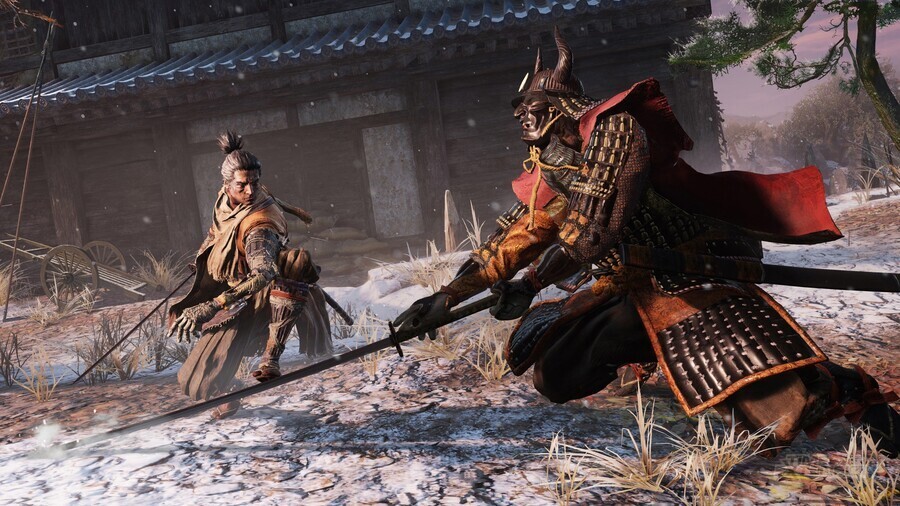
Outside everything to date, Sekiro: Shadows Die Twice makes for a refreshing change, its feudal, Japanese setting lending an Eastern balance to the Western mythos of the Souls canon. Scratch the surface, though, and it’s undeniably ‘Miyazaki’, from the rhythmic combat – it’s USP a blocking focus coupled with a resurrection conceit – to the stamina management, mysterious NPCs, and clever enemy placement.
But change is present and welcome; gone is the obtuse storytelling, replaced with a direct narrative that’s easy to follow. The online quotient is also absent: beat Sekiro on your own, or not at all. A swathe of prosthetic add-ons ease the pain, but there is no cheesing bosses with suicidal summons here.
Without doubt, this is the most challenging of Miyazaki’s digital spawn, but also one of the most rewarding, where stealth and move-set memory form the key to success. Historical setting aside, you’ll never feel too far from the familiar, brutal world of Souls.
Elden Ring (2022, PlayStation 4, PlayStation 5, Xbox One, Xbox Series X/S, Windows)
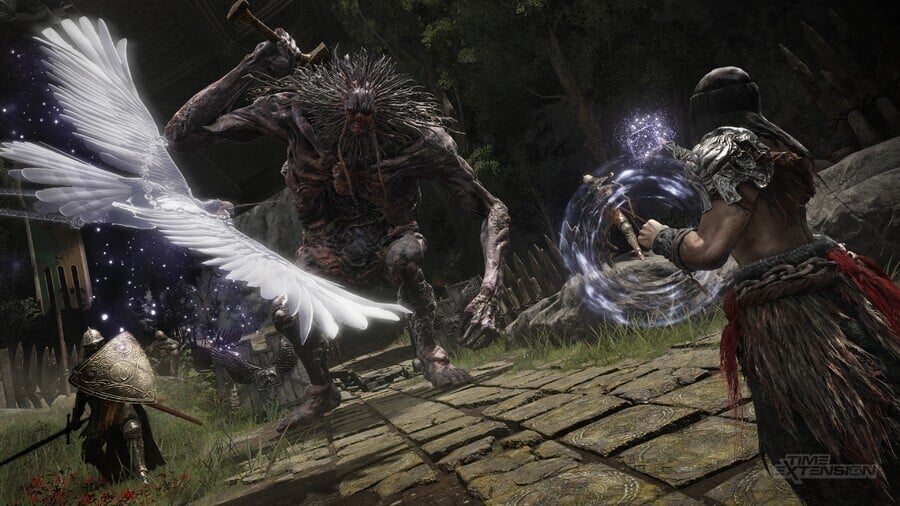
So, to From’s magnum opus, the ultimate realisation of the Soulsborne ethos, and the heavyweight vying for 2022’s Game of the Year. All that is great about the series is married to a vast open world, where the exploration of the Lands Between is as much the game as trawling the legacy dungeons.
Is it perfect? Of course not – access to warp points from the start dilute the sheer scale of the world, and Sites of Grace (the game’s save points) are far too generous. The game’s very accessibility is a double-edged sword; at once inclusive yet at risk of spurning stalwart aficionados. In real terms, these are simply the adjustments all Souls players make, as each game introduces new mechanics that run with or abandon old tropes. And we all get used to them. We always do.
What’s important is that Elden Ring is Soulsborne turned up to eleven, a classic, and a standard-bearer for everything that punishes yet rewards in equal measure. Bring on the DLC…
Got your own Soulsborne favourite? Loving the open world of Elden Ring? Prefer the tighter structure of Demon’s Souls? Let us know in the usual place.






Comments 6
Loved this article. Mirrored so much of my own Souls journey:
I can't quite remember exactly WHY I pre-ordered Demon's Souls on PS3, but I did. I had played some of FromSoft's previous games from King's Field & Armoured Core on PS1/2 but none quite grabbed me like this. This was still a time when most Japanese releases were 6-18 months later, if they came at all, and I think it had gained a lot of goodwill online from importers, enough that I really wanted to give it a go. I certainly don't remember reading a formal review until later. And that was part of the beauty, something that is hard to understand now with mass media and 24/7 gaming news, going into a game almost completely blind.
Regardless Demon's Souls blew me away. It still does, I just platinumed the wonderful PS5 remaster. Yes people talk about the updated graphics, sound etc. by Bluepoint, it is wonderful, but what amazes me is how the core gameplay mechanics are still golden, precise and fresh 13 years later. Most games of it's age FEEL old, this doesn't... mostly.
Dark Souls took everything a step further and is rightly hailed as a genre defining masterpiece. Firelink Shink and the myriad routes back to it are legend. Plus plin plin plon.
Dark Souls 2 gets treated as the black sheep of the family due to Miyazaki working on Bloodborne but it is a great game in it's own right, though perhaps not quite as memorable. It's a bit like saying it's the worst mainline Mario or Zelda game. Still likely a high 9 by most reckoning. The bar is just set so high.
Bloodborne is another masterpiece, the switch up from the defensive constant shield raised gameplay loop of souls to a system that rewards aggressive play through regenerating health was masterful. A few misteps like blood vials and bullets not auto-renewing on death can't stop this title standing out and being both wonderfully familiar yet also unique. What I wouldn't do for a 60fps patch, a PC release or even better a Bluepoint remaster... or sequel. Yet it's still wonderful regardless as is.
Dark Souls 3 is in many ways the best in the DS series, the gameplay mechanics improved hugely over DS1 & 2 but likely will never be seen as such. Truly an amazing game.
Considering how much I love these games it's slightly surprising I haven't yet gotten round to Sekiro or Elden Ring. (Or Nioh 1&2 or Mortal Shell for that matter.) But i'm contentedly slow with a backlog longer than the great wall of China and another penchant for quicker indie experiences. I'll get there eventually. If they are anything like the earlier games, they will have hardly aged a day.
Sekiro is truly its own beast. The game is designed to troll people who have mastered demons-dark souls, as it plays nothing like them in the slightest but SEEMS to look like it does.
I still come back to Demons frequently. There’s NOTHING like the good old DBS/CW combo, especially with the broken talisman. If you’ve played you’ll know what I’m talking about.
Dark Souls and Demons Souls both win for mood and setting, truly astounding.
Dark Souls 2 is easily my favorite, though. Best world design, best gameplay, and tons to do. It causes an unprecedented amount of tears in the community, which pleases me greatly.
Dark Souls 3, while good, is still just “hallways towards bosses,” and limits the hallmark of the series: exploration. It’s decent, but it’s sound design is god-awful on the ears. It has a few good bosses, but most of them are nothing to write home about. So much screeching!
Thankfully, Elden Ring fixed almost all that, while mucking up all the names. Yes, I still call it Estus, and I still rest at bonfires while collecting souls. You can’t stop me.
UMBASA
Unfortunately I went home lol 😆
I’ve had trouble getting into these games, which is weird because they sound on paper like something I ought to like. People used to say they were like NES games, but more fair. I disagree, they seem much less fair than (good) NES games, like Ninja Gaiden or Castlevania. More punitive and more disrespectful of the players. I’d like to overcome this eventually though and really get into them.
Who’s the Git? Was he or she good?
This article was a great overview while coming across as a bit generous to the fandom of FromSoftware games (in my opinion).
Elden Ring was my first souls game and after loving that I went back through the other games and could only really recommend that and Bloodborne as consistently good experiences.
I don't feel the difficulty of other FromSoft games' is inherently too hard but the unexplained game mechanics, grinding for items, and lack of save points (especially before boss rooms), make it a very time consuming and frustrating experience for many players who aren't die hard souls fans.
Show Comments
Leave A Comment
Hold on there, you need to login to post a comment...